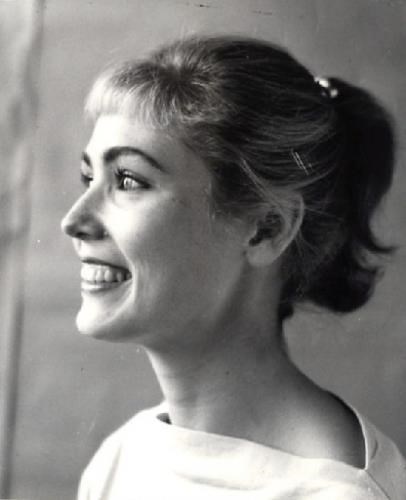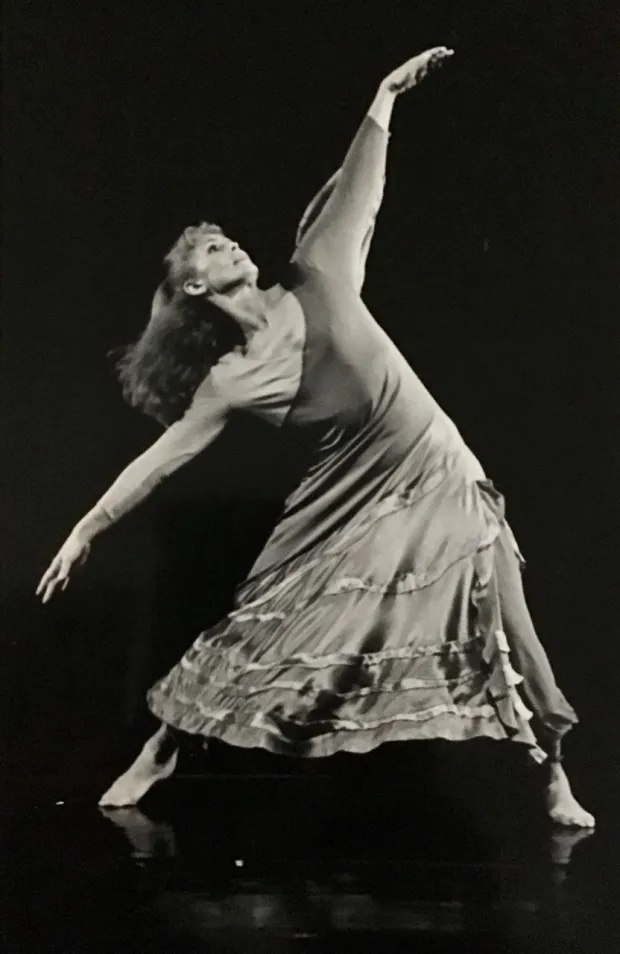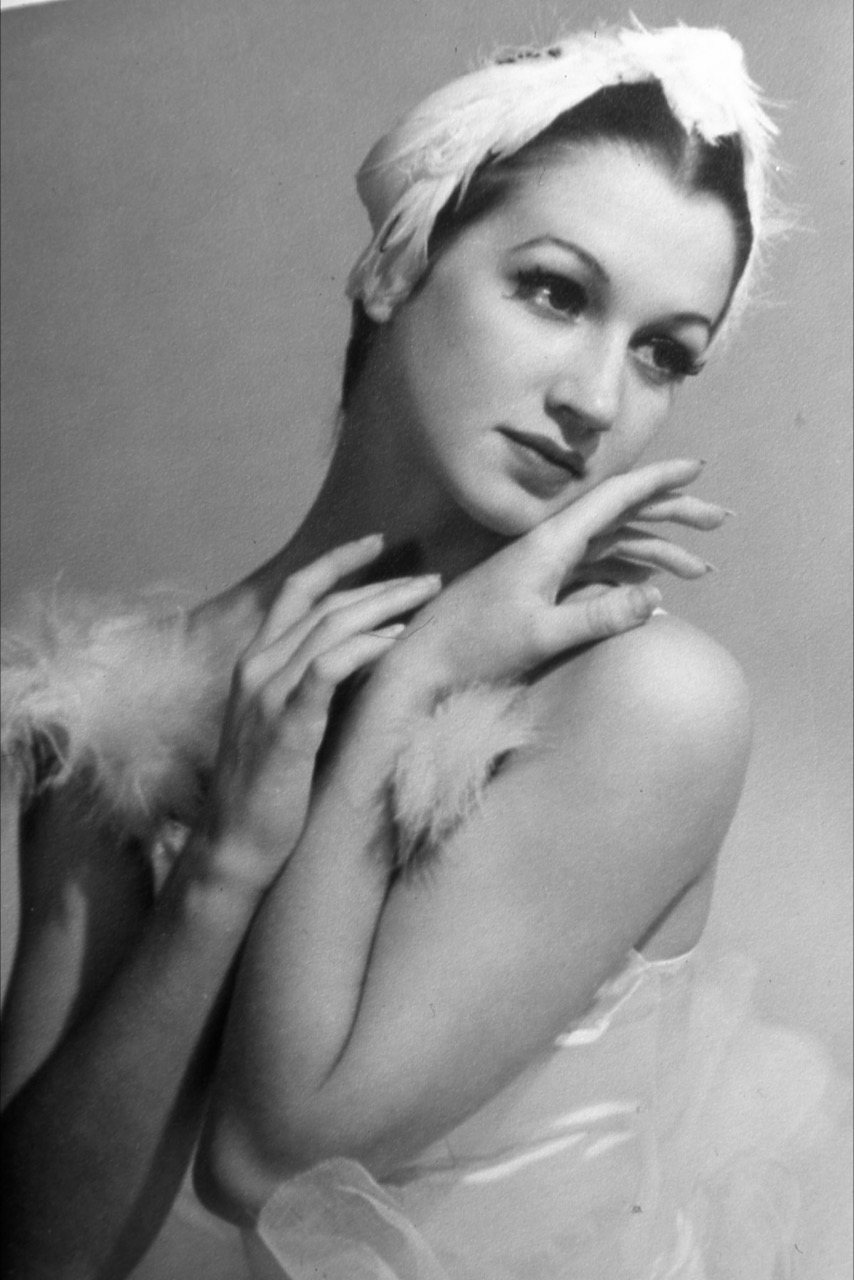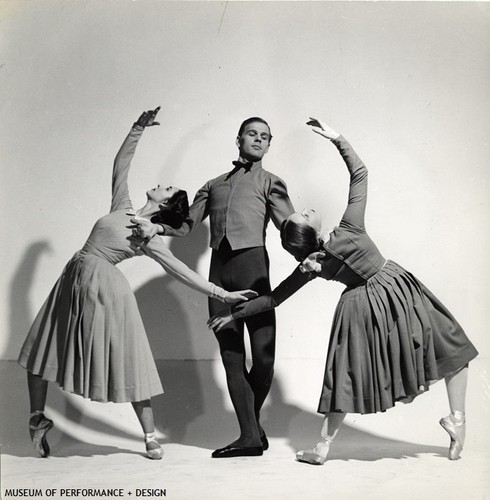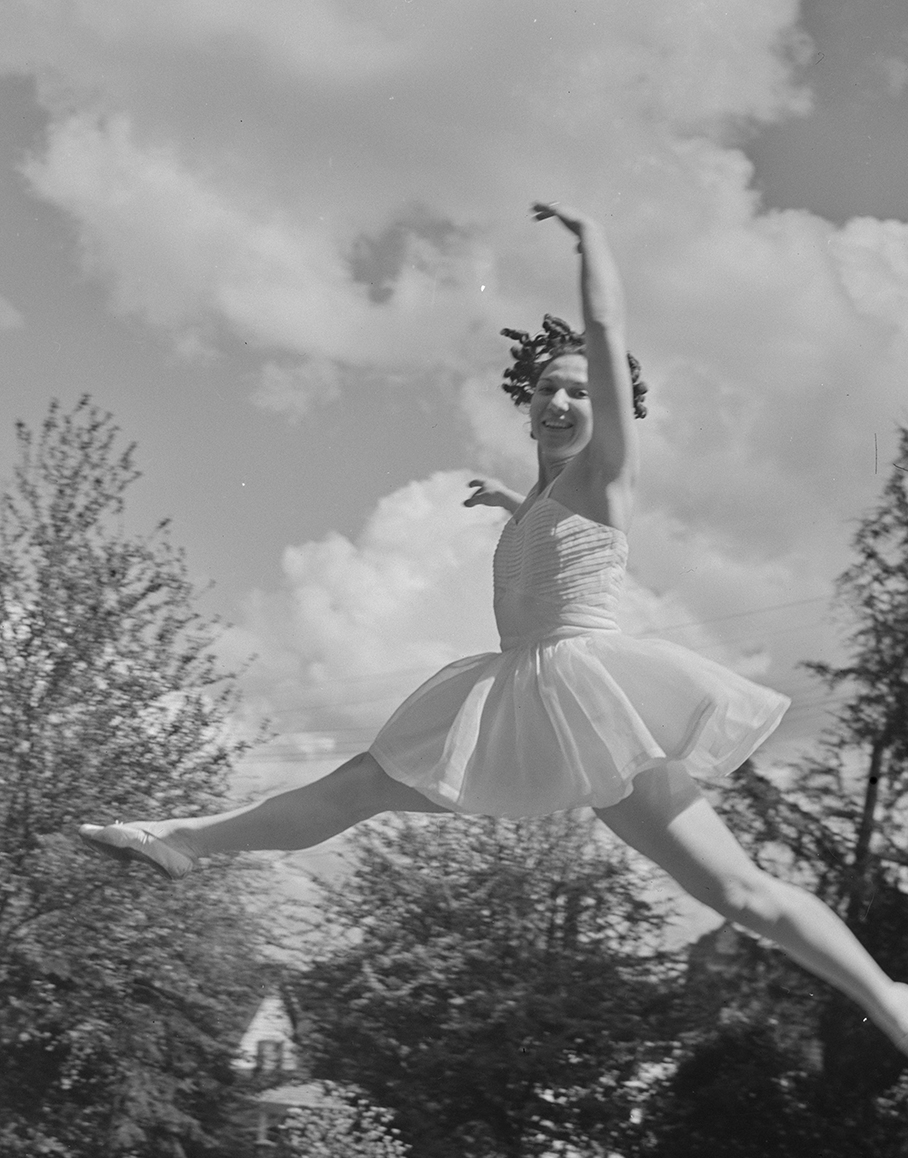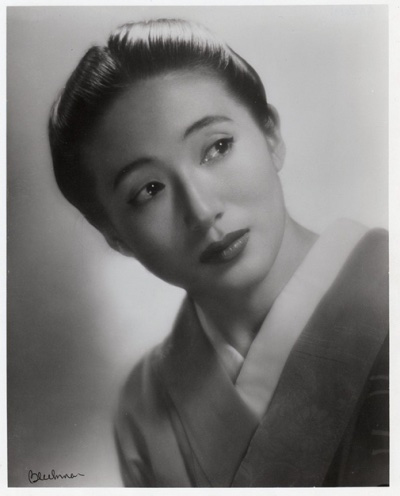Bonnie Merrill, a dancer, teacher, and choreographer, was a founder and creative force of Portland’s modern and contemporary dance scene. She had a profound influence on Oregon’s choreographers, dancers, and students and was an integral part of developing an audience for theatrical dance, especially in Portland, where she lived and worked for nearly forty years.
Bonnie Jo Nelson was born in Salt Lake City on September 2, 1935, to middle-class parents. She studied ballet at the University of Utah under Willam Christensen, the founder in 1951 of the first university ballet program in the country. Nelson graduated, cum laude, with a degree in English, and danced with the Utah Theater Ballet, which Christensen founded in 1963. The company became Ballet West in 1968, the year Merrill left Salt Lake City for Portland, where her husband, Ralph Merrill, had a job teaching dentistry at Oregon Health Sciences University. They had three young children.
Bonnie Merrill had an inquiring mind, and her thirst for new ways of moving was lifelong. Shortly after arriving in the city, she took classes at the Reed College Summer Dance Workshop, studying Martha Graham’s technique with Armagard Bardeleben, who headed Graham’s school in New York. She also attended Portland State College (now Portland State University) and took classes in the dance program taught by Vaunda Carter, who had studied dance in California with improvisational pioneer Anna Halprin.
Also in Carter’s class were Jann Dryer McCauley, Catherine Evleshin, and Patricia Wong, who together with Merrill formed a working dance group in 1971. A year later, they established a nonprofit they named the Portland Dance Theater, the city’s first contemporary dance troupe. PDT operated as a collective for nearly a decade, and Merrill, like every member, performed and choreographed for the troupe and shared the work of directing it.
The women also established a school at the Hillside Center, in Portland’s West Hills. With funding from the National Endowment for the Arts, the company soon expanded to include dancers such as Gregg Bielemeier, Charles Hubbard, and Joe Morales. Under the auspices of the National Endowment for the Arts’ Touring Program, they toured the state and beyond into the early 1980s, taking theatrical dance to some audiences that had never before seen dancers perform live.
In Portland, the company took modern dance into the public schools through the Young Audiences program and to city parks through Portland Parks and Recreation. Wong later recalled that Merrill invited audiences to join in the dancing. In 1978, through the National Endowment for the Arts, PDT performed Ear-Heart at the Civic (now Keller) Auditorium to music commissioned from Portland composer Gordon Mumma with a set by David Cotter. In 1979, the company performed Echo there, with an interactive set by Henk Pander. Merrill contributed choreography to and performed in both works.
During her four decades in Portland, Merrill choreographed over a hundred pieces and influenced countless students at Portland State University, where she taught technique and choreography from the mid-1970s until the department closed in the early 1990s. Some of those pieces were monumental, for the size of their casts as well as for their subjects. We Gather, a tribute to those lost to AIDS, was performed by fifty dancers in the street between Arlene Schnitzer Concert Hall and the Antoinette Hatfield Theater. The performers moved in silence, in pairs, holding poles hung with coats representing the fallen, an unforgettable manifestation of sorrow. Other performances were much smaller, including a solo show Merrill directed for choreographer Linda K. Johnson, to which she contributed a duet for Johnson and former Portland Institute for Contemporary Art director Kristy Edmunds, in which contact improvisational techniques were used to represent the push and pull of their romantic relationship. Merrill also narrated a show for Sue Brantley, who had studied with her at PSU. Portrait in a Three-Way Mirror was a charming solo performed by Brantley, at times contemplative, sometimes energetically witty, like many of Merrill’s contributions to the PDT.
In 1986, Merrill’s work was again performed on the Civic Auditorium stage when Ballet Oregon performed Catch Time, a jazz and contemporary dance-infused ballet performed in pointe shoes and accompanied by the Tom Grant Band. Her choreography for the dancers was laced with sophisticated wit. One of them was Dennis Spaight, who three years later was named the Oregon Ballet Theatre’s associate director and resident choreographer. He danced a lead role, performing classical steps to the syncopated rhythms of Grant’s jazzy score, along with the pedestrian movement that was characteristic of that era’s contemporary style. Merrill’s choreography greatly influenced Spaight’s Rhapsody in Blue, made for Ballet Oregon in 1987, and Ellington Suite, which Oregon Ballet Theater premiered in the early 1990s.
Bonnie Merrill took her art seriously, but not herself. She was deeply involved as a teacher, choreographer, and supporter with Conduit Studio Theater, a downtown center for dance that lasted for two decades. At the theater in 1996, she performed a duet with dancer Anne Bell in choreographer Mary Oslund’s Reflex Doll. Her insatiable curiosity led her to learn postmodernist Yvonne Rainer’s meticulous solo Trio A, a deadly serious work that Merrill once suggested “ought to be danced in tutus and cowboy boots.”
In 1994, Governor Barbara Roberts honored Merrill with the Governor’s Award for the Arts, the only individual dance artist ever to receive it. Bonnie Merrill died of leukemia on February 14, 2019.
-
![]()
Bonnie Merrill.
Portland Oregonian -
![]()
Bonnie Merrill.
Courtesy Artwatch, Merrill Family
Related Entries
-
![Henk Pander (1937-2023)]()
Henk Pander (1937-2023)
The Dutch artist Henk Pander arrived in Portland in 1965 and, except fo…
-
![Jacqueline Schumacher (1920-2019)]()
Jacqueline Schumacher (1920-2019)
Jacqueline Martin Schumacher, a ballerina and choreographer of ballet a…
-
![Janet Reed (1916-2000)]()
Janet Reed (1916-2000)
Janet Reed’s stellar career began in Portland in 1934 when she danced t…
-
![Oregon Ballet Theatre]()
Oregon Ballet Theatre
Founded in 1989, the Oregon Ballet Theatre is the largest professional …
-
![Sahomi Tachibana (1924–)]()
Sahomi Tachibana (1924–)
Sahomi Tachibana is a Japanese American master teacher and performer of…
Map This on the Oregon History WayFinder
The Oregon History Wayfinder is an interactive map that identifies significant places, people, and events in Oregon history.



